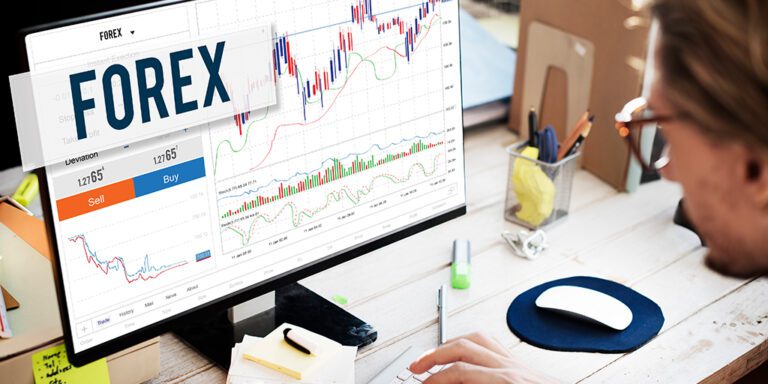If you have been trading in the global forex market for some time now, chances are that you have experienced some bumps along the way. No matter how experienced you are in the industry and at executing profitable trades, sometimes all of us need a bit of guidance and assistance, and one of the most effective ways of receiving this guidance, especially in the global forex market, is through the use of EAs or Expert Advisors.
Traders from across the globe have reported that properly utilizing the power of EAs not only increases control over their portfolio but also equips them to make effective decisions at key crossover points.
Thus, in today’s article, we will take a closer look at the world of EAs and how you can install and start using one today on the MT4 platform.
Without further ado, let’s get started.
What Is an EA?
One of the first and most important aspects we need to understand is the meaning of an EA or expert advisor, especially in the context of the global forex market.
In simple terms, an EA or expert advisor can be understood as a software which either intimates you about key decision crossovers, as in when to make a particular trade or executes the trade for you, based on preprogrammed conditions. Essentially, you can understand an EA as being a personal assistant who intimates you at moments when a decision needs to be made or performs functions based on your pre-defined orders.
Mostly, EAs are deployed on the MT4 and MT5 platform, and you have the option of either downloading one and customizing it to your needs or even developing one from the ground up to match and fulfill your trading requirements.
Advantages and Disadvantages of Using an EA
Now that you know the essential idea behind an EA, shared below are some of the most significant advantages and disadvantages of using one in your day-to-day trading.
An expert advisor, at its essence, is a polarizing tool, meaning that there is a clear line of distinction between the proponents and detractors of a trade. If used correctly, an EA can prove to be a highly effective tool which essentially scans the market 24/7 and intimates you about opportunities which might have developed overnight. Along with this, most EAs follow a strict trading strategy, which is designed to generate a profit, and since the detection of promising signals are preprogrammed into the software, it can effectively nullify your bias and let you execute trades effectively without emotion coming into the way.
Although the rigidity of an EA can prove to be a real boon in certain situations, however in others, it can cause you to lose out on the opportunity to evaluate a trade better since most EAs make their decisions based on a certain number of factors, which are limited compared to the human brain. For example, a common drawback of EAs is not being able to process news as and when they are published, and since every money market essentially runs on human emotions, factoring it out might prove to be a challenge rather than an opportunity.
Additionally, since at the end of the day, an EA is essentially a piece of software that has been built on hypotheses and tested within a simulation, there is no way to guarantee its efficiency until real money is at risk. For example, if you wish to design an EA from the ground up to reflect your trading strategy, and it outperforms your expectation in the simulation, there is no 100% guarantee that in live trading, it will consistently generate profit. One reason behind this being that in live trading, there are a lot many variables at play as compared to a simulation.
Aspects to Consider Before Using an EA
One of the most important factors you should take into consideration before using an EA is to first test it out in a demo account. If you have purchased the EA from the MetaQuotes store or you have a custom-built one, using it at a demo account will give you the opportunity to reflect how this tool can assist you in your trading process.
Although the test in a demo account will be limited due to the presence of tight sample size, using it regularly (at least for a week or two) in a demo account will give you the opportunity to get comfortable with it across the verticals of interpreting the recommendations it provides along with understanding how best you can use it alongside your trading strategy.
Along with this, another important consideration to keep in mind is the fact that EAs can often process a limited amount of information at the same time. As we explained in an earlier example, even the most sophisticated of EAs cannot process news and political information, both of which always have a huge impact on any trade since the entire money market essentially runs on human emotions.
How Can You Create an EA of Your Own
Now that you know the basics of an EA, along with the points you should keep in mind before using one, shared below is a step-by-step process on how you can create an EA of your own.
- One of the first steps you need to take in order to create an EA is to understand the language on which MT4 is built, and that is MQL4.
- Although the process of creating an EA is by no means easy, these days, there are various elaborative guides and coding templates available online which will help you in creating a basic EA.
- Every EA you make via the use of coding templates should follow the standard pattern of header
- Special function initialize
- Special function start
- Special function de-initialize
- Control
- The platform does not support hedging as it has been discontinued.
The Header is the start of code in the EA framework, and this is where the most significant information is stored. While creating your Header, you can include your indicators and parameters within the Header, followed by inputting all the money management rules you would like your EA to follow, along with any global variables such as stop.
The next part of the coding process is the special function initialize and special function start. Although these require in-depth technical knowledge to code, you can understand them as being the section which is responsible for retrieving the value of your chosen indicators, address the trading logic you specified earlier in the header section, and also address any current signals and orders.
The remaining two parts, that is, the special function de initialize and control, are self-explanatory, and they dictate when the initialization process will stop, followed by what control needs to be exercised, whether to notify you with a trade recommendation or simply execute the trade on your behalf.
Essentially, when you are designing your EA, you need to ensure that the entire process runs on a continuous loop and is not executed only once in a while.
How to Purchase and Install an EA From the MetaQuotes Store?
Creating an EA right from scratch isn’t for everyone, mainly given the fact that it is complicated and time-consuming. However, a better way through which you can get access to an EA is by downloading one from the MetaQuotes store. Although the ones you come across won’t have the same level of customization as the home-brewed one since it is faster to access, you can get it up and running in less time.
In order to install the EA on your trading platform, follow the below-mentioned steps.
Step 1: Transfer Your Files
Once you have purchased and downloaded the EA from the MetaQuotes store, locate it on your computer (generally, it will be located in the Downloads folder). Once you have come across it, copy the contents of the folder and navigate to your system’s C Drive, where you can find the MetaTrader folder. Locate the “Experts” folder and paste all the contents by agreeing to all the admin requests presented by your system.
Step 2: Install the EA
Once you have successfully transferred the files, the next stage of the process is to start MT4 and locate the Expert Advisor section. Look out for the plus sign and click on it to view a list of the now available EAs to be installed. Select the EA of your choice and drag it onto the charts to activate it and start its operations.
Step 3: Fine-Tuning to Your Requirements
In order to get the best results out of your EA, you will need to fine-tune its settings. In order to do this, locate the gear icon, adjust the parameters and click on OK to save the settings. Once done, your EA should ideally start performing as per your expectations.
Conclusion
Getting an EA to assist you in your trading journey is a wise decision; however, you should always be mindful of the fact that at no time should you trust the EA’s advice for all your trading decisions. You always need to remember that the EA is just a tool to assist you in your decision-making and not actually make them for you.


